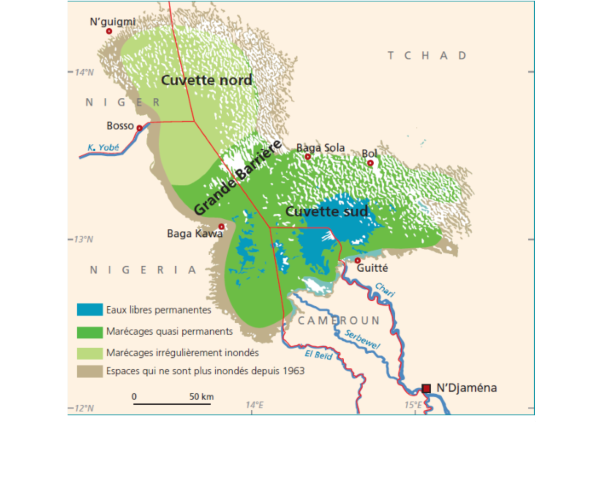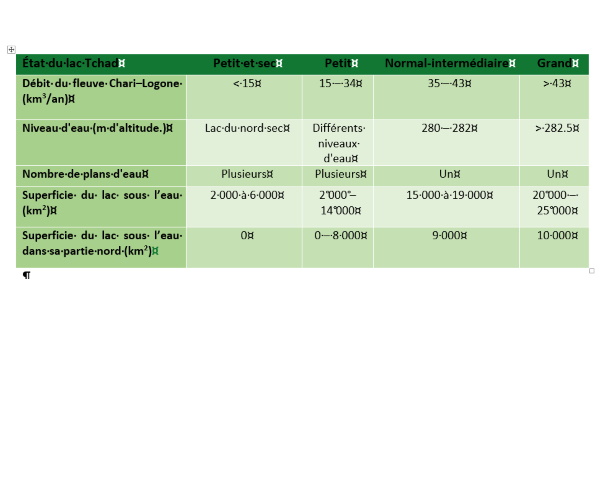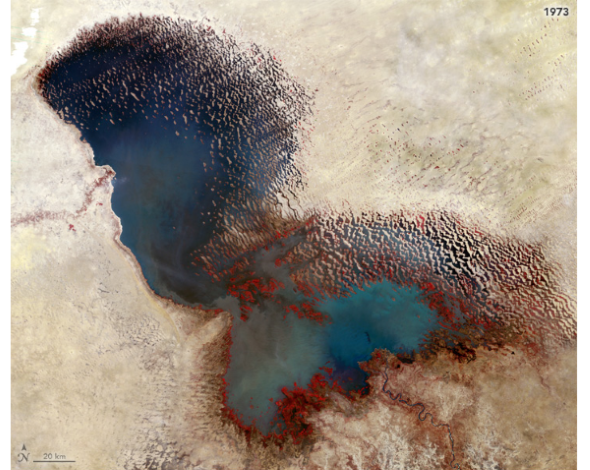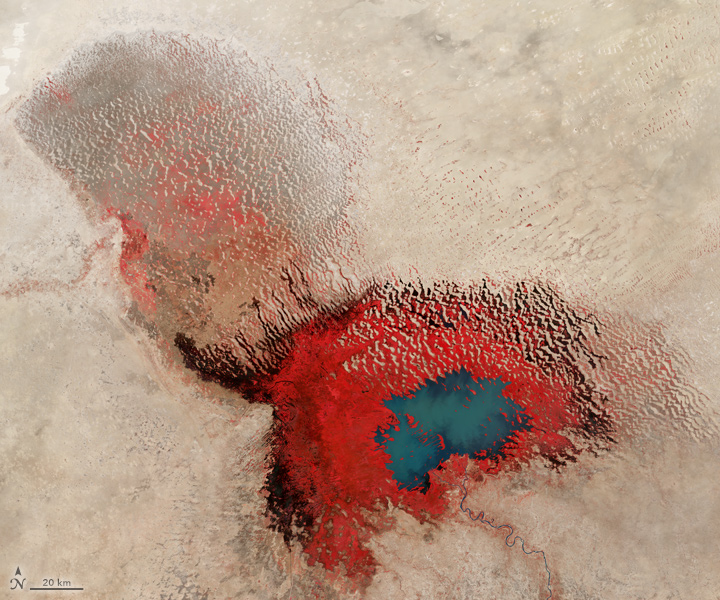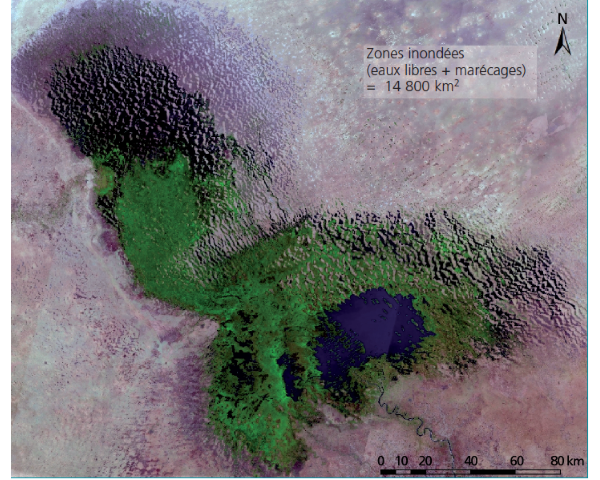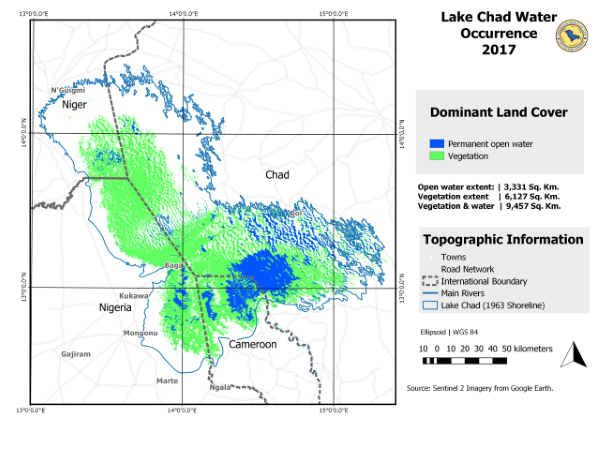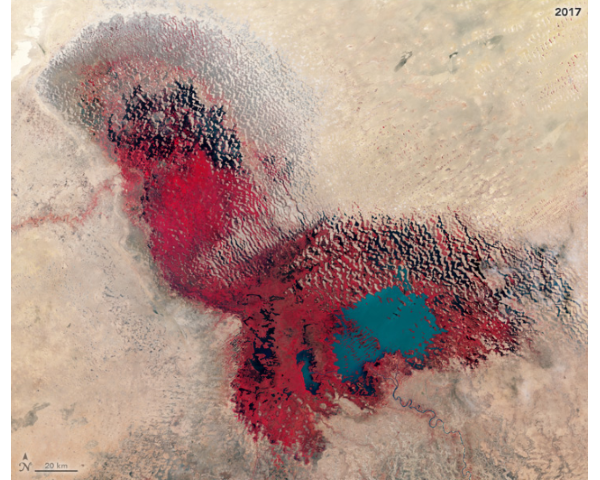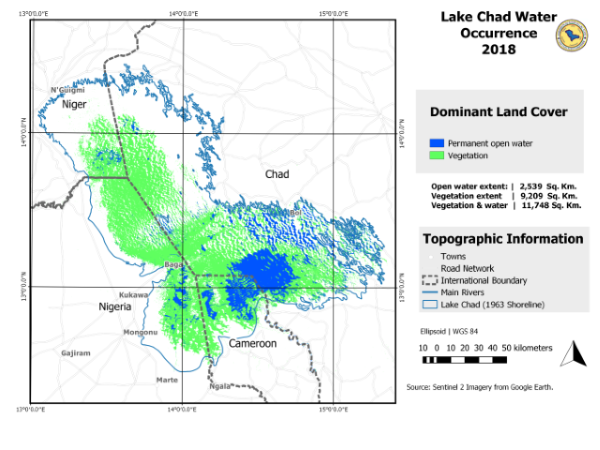Description
The main feature of Lake Chad is its variability. The Lake has a long history of wet and dry periods covering several time scales, from geological to annual and seasonal. In 1928 TILHO propose a classification into three main states of the lake, Little Chad, Normal Chad (Medium Chad) and Greater Chad. These various statements are directly dependent on changes in rain on the Chari basin. The Figure 1 and Table 1 describes the principle characteristics of a Small, Medium and Greater Lake Chad .
In the 1950 decades, after a wet period, the Lake was qualified as Greater Chad, consisting of a single body of water of about 20,000 km2. Between 1957 and 2008, Lake Chad was in a state of Little Chad or Dry Little Chad two thirds of the time, and in a state of Middle Chad or Greater Chad one third of the time (Bader et al., 2011). The year 1973 correspond to a Middle Lake Chad (Figure 2). The years 1985, 1987 (Figure 3), 1988 and 1991 correspond to a dry Little Chad with a dry north basin all year round. This northern basin dried out for part of the year in 1975, 1977, 1982, 1984, 1990, 1992, 1993 and 1994. The northern basin retained some water throughout the year in 1989 and from 1995 to 2013 (Figure 4).
In the use of satellite data, open water is easily accessible identifiable in a near-infrared channel and its surface is easy to quantify. The Lake Water Extent for 2017 and 2018 has been calculated via Sentinel 2 satellite data by the LCBC Modelling and Remote Sensing Expert Mohammed Bila.
The calculated open water extent in 2017 was 3331 km² (Figure 5) and in 2018 only 2538km² (Figure 7) which characterizes the status of the Lake as a Little Lake.
Unfortunately, the Lake Chad consists of a part of open water and a portion of water covered with swampy vegetation. The swamps areas are in this estimation not considered, so that these values cannot be seen as total surface areas of the Lake Chad.
These swamps, when flooded, should be considered as aquatic ecosystems since they participate in particular in the production of fish and for the residents, who use the canoe to move around, they belong to the Lake.
